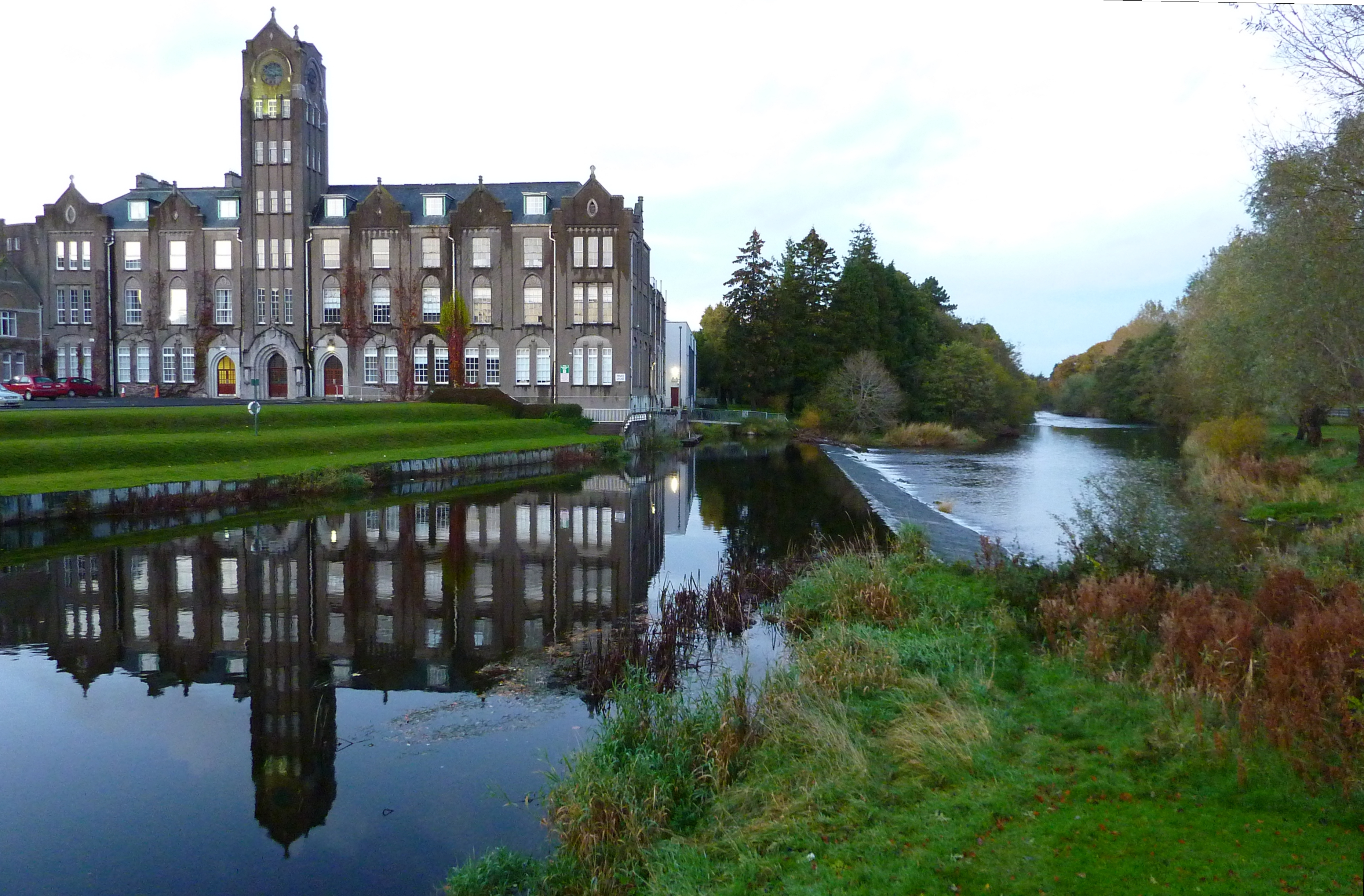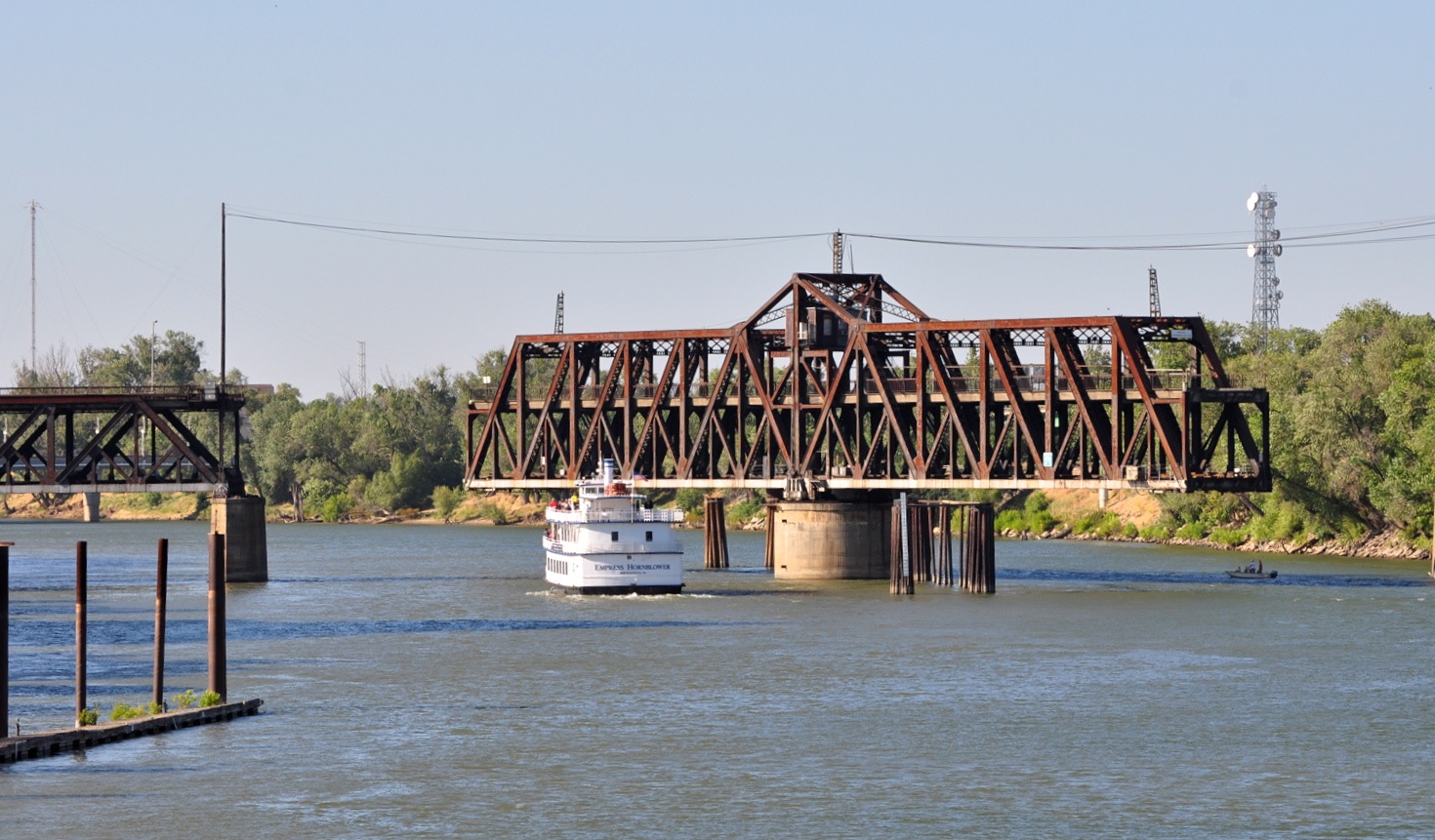|
Seán O'Casey Bridge
Seán O'Casey Bridge () is a pedestrian swingbridge spanning the River Liffey in Dublin, Ireland, joining City Quay in the Grand Canal Docks area to North Wall Quay and the IFSC. Designed by architect Cyril O'Neill and O'Connor Sutton Cronin Consulting Engineers (for which they won an Institution of Structural Engineers Award for Pedestrian Bridges in 2006), the bridge was built in 2005 as part of a large-scale urban renewal scheme under the Dublin Docklands Development Authority to link the north and south quays and rejuvenate both. The swing bridge spans approximately 100 metres and has two balanced cantilever arms that swing open to permit boats to pass up river. Around 2010 the remote control that operates the swing bridge was misplaced, and the bridge was unable to be opened until the control system was reprogrammed in 2014. The bridge was opened by Taoiseach Bertie Ahern in July 2005. It is named after the playwright and Irish Citizen Army member Seán O'Casey Se� ... [...More Info...] [...Related Items...] OR: [Wikipedia] [Google] [Baidu] |
River Liffey
The River Liffey ( Irish: ''An Life'', historically ''An Ruirthe(a)ch'') is a river in eastern Ireland that ultimately flows through the centre of Dublin to its mouth within Dublin Bay. Its major tributaries include the River Dodder, the River Poddle and the River Camac. The river supplies much of Dublin's water and supports a range of recreational activities. Name Ptolemy's ''Geography'' (2nd century AD) described a river, perhaps the Liffey, which he labelled Οβοκα (''Oboka''). Ultimately this led to the name of the River Avoca in County Wicklow. The Liffey was previously named ''An Ruirthech'', meaning "fast (or strong) runner". The word ''Liphe'' (or ''Life'') referred originally to the name of the plain through which the river ran, but eventually came to refer to the river itself. The word may derive from the same root as Welsh ''llif'' (flow, stream), namely Proto-Indo-European ''lē̆i-4'', but Gearóid Mac Eoin has more recently proposed that it may derive fr ... [...More Info...] [...Related Items...] OR: [Wikipedia] [Google] [Baidu] |
Swing Bridge
A swing bridge (or swing span bridge) is a movable bridge that has as its primary structural support a vertical locating pin and support ring, usually at or near to its center of gravity, about which the swing span (turning span) can then pivot horizontally as shown in the animated illustration to the right. Small swing bridges as found over canals may be pivoted only at one end, opening as would a gate, but require substantial underground structure to support the pivot. In its closed position, a swing bridge carrying a road or railway over a river or canal, for example, allows traffic to cross. When a water vessel needs to pass the bridge, road traffic is stopped (usually by traffic signals and barriers), and then motors rotate the bridge horizontally about its pivot point. The typical swing bridge will rotate approximately 90 degrees, or one-quarter turn; however, a bridge which intersects the navigation channel at an oblique angle may be built to rotate only 45 degrees, o ... [...More Info...] [...Related Items...] OR: [Wikipedia] [Google] [Baidu] |
Bridges In Dublin (city)
This article lists the bridges and tunnels in Dublin and the Greater Dublin Area in Republic of Ireland, Ireland. The bridges are ordered sequentially upstream, from mouth to source (river or stream), source. For lists that are not in table format, alternative or historical names are in curved brackets (parentheses) and traversing roads or rails are in square brackets. Bridges over the Liffey Bridges over the River Liffey in Greater Dublin, from east to west. Bridges over the River Liffey outside Greater Dublin, from east to west. * ''Sewage treatment works bridge'' * Leixlip Bridge [Leixlip Road] * ''M4 motorway (Republic of Ireland), M4 motorway'' * New Bridge [R404] * Liffey Bridge (Celbridge Bridge) [Dublin Road, Celbridge] * A footbridge immediately to the south of the road bridge in Celbridge * Rock Bridge [footbridge at Celbridge Abbey] * Straffan Bridge * A truss bridge just west of Straffan Bridge * The Bridge at 16 [19th century wrought iron pedestrian suspension b ... [...More Info...] [...Related Items...] OR: [Wikipedia] [Google] [Baidu] |
Seán O'Casey
Seán O'Casey ( ga, Seán Ó Cathasaigh ; born John Casey; 30 March 1880 – 18 September 1964) was an Irish dramatist and memoirist. A committed socialist, he was the first Irish playwright of note to write about the Dublin working classes. Early life O'Casey was born at 85 Upper Dorset Street, Dublin, as John Casey, the son of Michael Casey, a mercantile clerk (who worked for the Irish Church Missions), and Susan Archer. His parents were Protestants and he was a member of the Church of Ireland, baptised on 28 July 1880 in St. Mary's parish, confirmed at St John the Baptist Church in Clontarf, and an active member of St. Barnabas' Church on Sheriff Street until his mid-20s, when he drifted away from the church. There is a church called 'Saint Burnupus' in his play ''Red Roses For Me''. O'Casey's father died when Seán was just six years of age, leaving a family of thirteen. The family lived a peripatetic life thereafter, moving from house to house around north Dublin. ... [...More Info...] [...Related Items...] OR: [Wikipedia] [Google] [Baidu] |
Irish Citizen Army
The Irish Citizen Army (), or ICA, was a small paramilitary group of trained trade union volunteers from the Irish Transport and General Workers' Union (ITGWU) established in Dublin for the defence of workers' demonstrations from the Dublin Metropolitan Police. It was formed by James Larkin, James Connolly and Jack White on 23 November 1913. Other prominent members included Seán O'Casey, Constance Markievicz, Francis Sheehy-Skeffington, P. T. Daly and Kit Poole. In 1916, it took part in the Easter Rising, an armed insurrection aimed at ending British rule in Ireland. Following the Easter Rising, the death of James Connolly and the departure of Jim Larkin, the ICA largely sidelined itself during the Irish War of Independence by choosing to only offer material support to the Irish Republican Army and not become directly involved itself. Following the ICA's declaration in July 1919 that members could not be simultaneously members of both the ICA and the IRA, combined wi ... [...More Info...] [...Related Items...] OR: [Wikipedia] [Google] [Baidu] |



